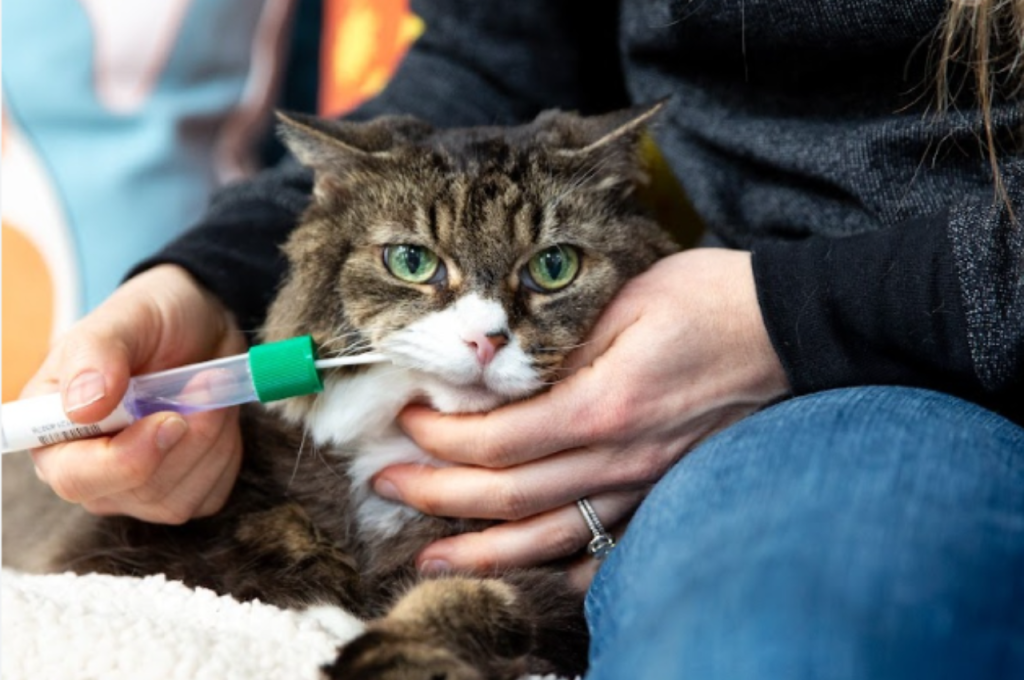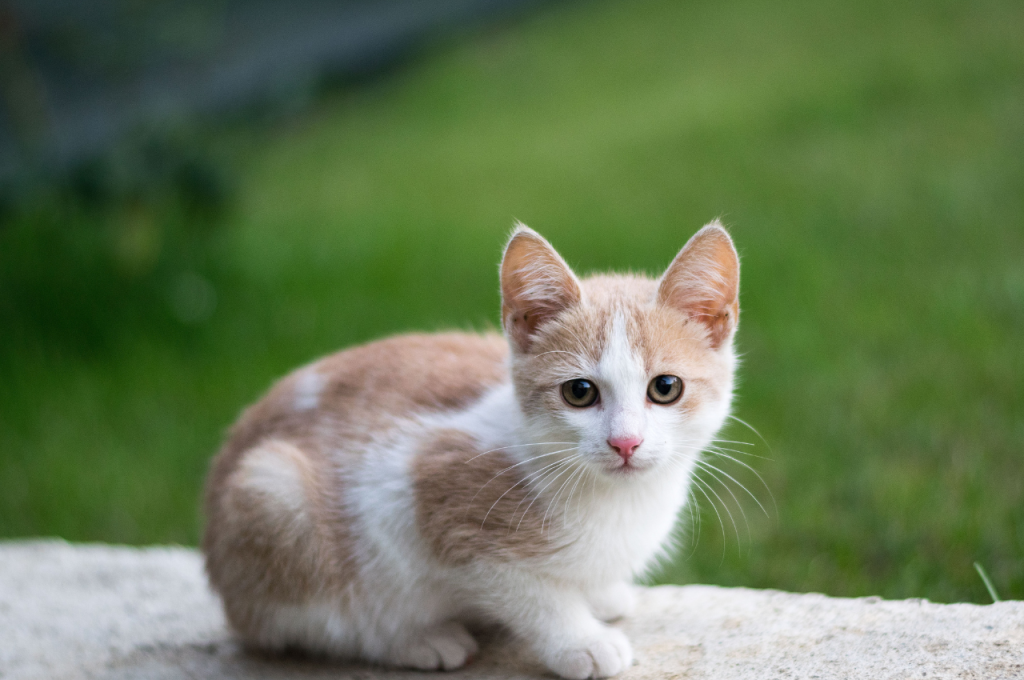To tell if a cat is a boy or a girl, check the genital region. Female cats have a wider distance between the anus and urinary tract opening, while male cats have a visible penis.
Cats are one of the most popular pets in the world. They are known for their unique personalities, independence, and playful nature. However, it is not always easy to determine their gender simply by looking at them. Whether the cat is a stray, newly adopted, or simply not yet recognizable, it is important to be able to correctly identify their gender.
Knowing the difference between male and female cats is essential for proper care, behavior, and medical treatments. We will look at the ways to tell if a cat is a boy or a girl and explore some of the behaviors and traits associated with each gender.
1. Physical Characteristics
One way to tell if a cat is a boy or girl is by looking at their physical characteristics. Female cats tend to have smaller, rounder heads and narrower space between their hind legs, while male cats have a more triangular-shaped head and a larger distance between their hind legs.

Additionally, male cats have visible genitalia, which are located near the anus.
Fur Length and Color
One of the easiest ways to determine if a cat is a boy or a girl is by looking at their fur length and color. Male cats tend to have a thicker, coarser coat than females, while females have a finer, softer coat. However, this is not always the case as some breeds, such as the Devon Rex, have curly hair. Another sign to observe is the color of their coat. For some breeds, males have a more vibrant or pronounced coat color, while females have a more subtle or muted color. For example, with the calico pattern, a predominantly white cat with black and orange patches, the majority of calico cats are female.
Body Shape and Size
Another way to tell if a cat is a boy or a girl is by observing their body shape and size. Male cats are generally larger and more muscular, with a wider head and neck, while females are more petite. However, this is not always a reliable indicator as some female cats can also be quite large and muscular. The best way to determine if a cat is male or female based on shape and size is to observe their overall body structure, including their weight and posture. Males often have a more upright, dominant posture, while females may have a more crouched, submissive posture.
Facial Features
The third way to tell if a cat is a boy or a girl is by examining their facial features. Typically, male cats have broader, more rugged-looking faces with larger noses, while female cats have more delicate, narrow faces with smaller noses. However, this is not always the case as some breeds, such as the Siamese, have a similar face shape for both males and females.
Another facial feature to examine is the distance between the eyes. In general, male cats have a wider distance between their eyes, while females have a narrower distance. Nonetheless, it is not a guarantee and should not be the only determining factor when identifying a cat’s gender.
2. Behavioral Differences
Distinguishing between male and female cats can be a challenge, but behavioral differences can give you some clues. Males tend to be more territorial and aggressive, while females may be more reserved and affectionate. Observing their behavior can help you determine whether your furry friend is a boy or a girl.
Determining the gender of a cat by recognizing physical characteristics alone can be difficult, particularly when the cat is too young to be spayed or neutered. However, there are other methods you can use to identify whether your feline friend is a boy or a girl, including paying attention to their behavior.
Litter Box Habits
One way to determine if your cat is male or female is to observe their litter box habits. Male cats tend to stand up while urinating, leaving a distinctive stream pattern that differs from the squatting position used by most female cats. Additionally, male cats will often spray their urine to mark their territory, while female cats tend to keep their urine confined to the litter box.
Territorial Behavior
Territorial behavior is another way to differentiate between male and female cats. Male cats are known for being more territorial than females, often fighting with other males to defend their territory. Female cats may defend their territory as well, but they tend to be less aggressive and are more likely to avoid confrontations.
Vocalizations
Both male and female cats can be vocal, but the sounds they make can differ depending on their gender. Male cats are more likely to use loud, aggressive vocalizations to mark their territory and intimidate other cats. Female cats tend to be more expressive with their vocalizations, using softer meowing to communicate with their owners and other cats. By paying attention to your cat’s litter box habits, territorial behavior, and vocalizations, you can make an educated guess about whether they are male or female. However, if you want to be completely sure, the most accurate method is to have your veterinarian examine your cat.
3. Genetics and DNA Testing
Genetics and DNA testing are the most reliable ways to determine the gender of a cat. A simple cheek swab or blood test can reveal the cat’s sex chromosomes, making it easy to tell if it’s a boy or a girl.

These tests can also uncover valuable information about the cat’s breed and potential health risks.
Xx vs Xy Chromosomes
In the world of genetics, cats are not much different from humans. The chromosomes that determine the sex of a cat are found in their DNA, with females carrying two X chromosomes (XX) and males one X and one Y chromosome (XY). While these chromosomes are crucial in determining the sex of a cat, they may not always be visible to the naked eye. It’s important to note that not all male cats have Y chromosomes, which can sometimes confuse in determining their sex. In rare cases, male cats may have an extra X chromosome (XXY), making them intersex and giving them both male and female characteristics.
Breed-specific Traits
Breed-specific traits can sometimes help in determining a cat’s gender. Certain breeds may have distinct physical characteristics that are more prevalent in one gender over the other. For example, male Scottish Fold cats tend to have rounder faces, while females often have flatter faces. Persian cats also have differences in physical characteristics with males having a more massive head and equally massive neck. These physical characteristics of a specific breed may provide a clue, but they should never be relied upon entirely.
Accuracy of DNA Testing
When all else fails, DNA testing can provide a 99% accurate answer to the question of a cat’s gender. DNA testing involves a simple blood or tissue sample, which is then sent to a laboratory for analysis. DNA testing can determine the sex of a cat accurately, even when physical characteristics are ambiguous. It should be noted that DNA testing is not usually necessary for domestic cats.
However, it is often required in certain breeds and is useful for breeders who need to ensure accurate parentage and avoid genetic disorders. When it comes to DNA testing, it’s always best to use a reputable laboratory and ensure that the results are accurate.
4. Other Identification Methods
Identifying the gender of a cat can be challenging, but there are various methods to make it easier. Other identification methods include checking for the presence of testicles, examining the distance between the anus and genital opening, and looking for color patterns on the fur.
Microchipping and Registration
Microchipping is a common and effective way to identify a cat. A small microchip, about the size of a grain of rice, is inserted under the cat’s skin, usually between the shoulder blades. This microchip contains a unique identification number that can be scanned with a handheld device. If a cat is found and taken to a veterinary clinic or animal shelter, the microchip can be scanned, and the owner can be identified through the registration information connected to the microchip. It’s essential to ensure that the microchip is registered and up-to-date with accurate owner information so that the cat can be quickly reunited with their owner.
Ear Tipping
Ear tipping is a practice commonly used in feral cat colonies as a way to easily identify spayed or neutered cats from a distance. Ear tipping involves surgically removing a small part of the ear’s tip while the cat is under anesthesia. This procedure is quick and simple and doesn’t harm the cat. The ear’s tip is then left flat or slightly curved, creating a visible notch in the ear that indicates the cat has been spayed or neutered. While this method is primarily used in feral cat colonies, it can be used in identifying community cats in urban areas.
Tattooing
Tattooing is a permanent way to identify a cat, and it’s done similarly to how humans get tattoos. A small needle injects ink into the cat’s skin, usually on the ear, groin, or inner thigh area. The tattoo can be any combination of numbers, letters, or symbols and is registered with a national database. Tattooing is a humane and safe way to identify a cat, and it can aid in recovering lost or stolen cats. It’s important to ensure that the tattoo is registered with a national database and that all the relevant information is up-to-date.
5. Misconceptions
There are several misconceptions about how to tell if a cat is a boy or a girl. Some believe that you can simply look at the cat’s color or behavior, but the only surefire way to determine the cat’s sex is to examine its genitalia or have a veterinarian do it for you.
When it comes to determining whether a cat is a boy or a girl, there are many misconceptions that people have. These can range from certain physical characteristics to gender-based names that are often unreliable.
Myth: Males Have More Colors
One common misconception is that males have more colors than females. While it’s true that certain breeds of cats may have gender-specific coat colors, this is not always the case. A cat’s coat color has nothing to do with its gender. It’s important to look for other physical characteristics to determine a cat’s gender, such as the size and shape of their genitalia.
Myth: Females Have Bigger Ears
Another myth is that females have bigger ears than males. While it’s true that some breeds of cats may have gender-specific ear sizes, this is not a reliable method for determining a cat’s gender. A cat’s ear size has nothing to do with its gender. It’s important to look for other physical characteristics to determine a cat’s gender, such as the presence or absence of a scrotum.
Unreliable Gender-Based Names
It’s also important to be cautious when using gender-based names to determine a cat’s gender. While certain names may be traditionally associated with male or female cats, these names are often unreliable. For example, a cat named “Samantha” may be male, while a cat named “Max” may be female. It’s always best to look for physical characteristics to determine a cat’s gender, rather than relying on their name.

To summarize, while there are many misconceptions surrounding the gender of cats, it’s important to rely on physical characteristics rather than stereotypes or unreliable methods. By understanding the true indicators of a cat’s gender, you can ensure that you provide the proper care and attention for your furry friend.
Conclusion
Determining the sex of your cat can be challenging for many new cat owners. However, with keen observation and familiarity with cat anatomy, it is easy to distinguish between male and female cats. By looking at the genitalia, belly, and physical characteristics, you can determine whether your cat is a boy or a girl.
It is essential to know the gender of your cat for proper care and veterinarian services. Being aware of the characteristics of male and female cats can help you provide better care and a comfortable environment for them.
